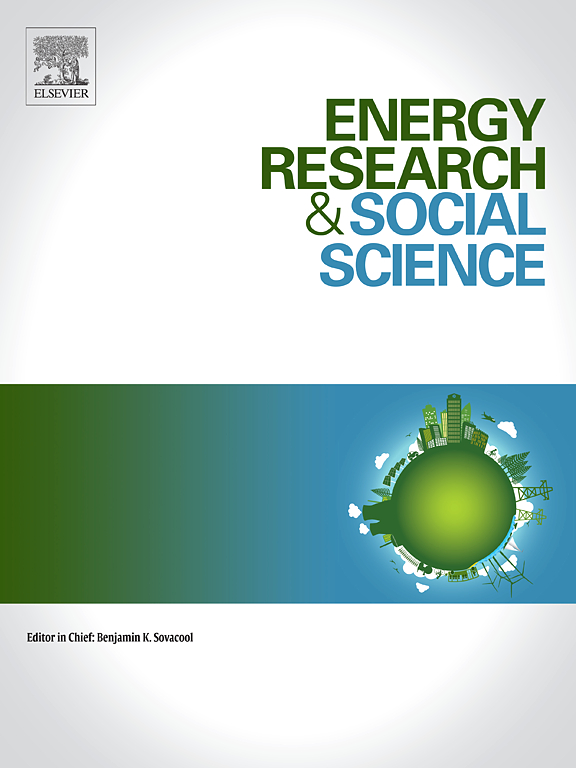Community-led solar energy technology adoption in rural Zambia: The role of observational learning and neighbor influence
IF 6.9
2区 经济学
Q1 ENVIRONMENTAL STUDIES
引用次数: 0
Abstract
Solar PV technology holds significant potential for addressing energy access issues in rural Zambia. However, adoption rates remain low despite numerous interventions. This study explores the impact of community-based interventions, leveraging local networks, individual benefits, and peer consultation, on accelerating PV adoption and willingness to pay. The primary aim is to understand how social and individual benefits influence PV adoption intention and examine the relationship between visual exposure to solar technology and adoption intention. The research seeks to inform policies and interventions that promote sustainable energy access and socio-economic development in rural Zambia and similar contexts. Over 6 months, a qualitative study was conducted involving 58 interviews, 7 focus group discussions, pictorial evidence, and observational techniques. The study engaged 120 rural subsistence farmers and 16 commercial farmers across three regions of Zambia, using five local languages. The research employed the Rural Development Stakeholder Hybrid Adoption Model (RUDSHAM) that was developed for this research, which combines the Theory of Planned Behavior (TPB), the Technology Acceptance Model (TAM), and Diffusion of Innovations (DOI) theory. Findings reveal that shifting individual and community mindsets is crucial for project sustainability. Emphasizing individual benefits leads to broader community advantages as participation increases. Additionally, PV adoption and willingness to pay can be catalysed through systematic knowledge dissemination and leveraging peer and social influence. The study highlights the need for donors to deepen their understanding of poverty to make effective interventions. These insights provide a foundation for developing targeted strategies to enhance PV adoption in rural settings.
求助全文
约1分钟内获得全文
求助全文
来源期刊

Energy Research & Social Science
ENVIRONMENTAL STUDIES-
CiteScore
14.00
自引率
16.40%
发文量
441
审稿时长
55 days
期刊介绍:
Energy Research & Social Science (ERSS) is a peer-reviewed international journal that publishes original research and review articles examining the relationship between energy systems and society. ERSS covers a range of topics revolving around the intersection of energy technologies, fuels, and resources on one side and social processes and influences - including communities of energy users, people affected by energy production, social institutions, customs, traditions, behaviors, and policies - on the other. Put another way, ERSS investigates the social system surrounding energy technology and hardware. ERSS is relevant for energy practitioners, researchers interested in the social aspects of energy production or use, and policymakers.
Energy Research & Social Science (ERSS) provides an interdisciplinary forum to discuss how social and technical issues related to energy production and consumption interact. Energy production, distribution, and consumption all have both technical and human components, and the latter involves the human causes and consequences of energy-related activities and processes as well as social structures that shape how people interact with energy systems. Energy analysis, therefore, needs to look beyond the dimensions of technology and economics to include these social and human elements.
 求助内容:
求助内容: 应助结果提醒方式:
应助结果提醒方式:


